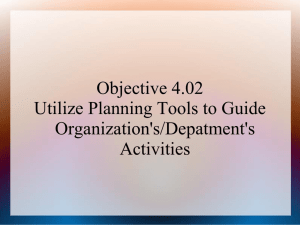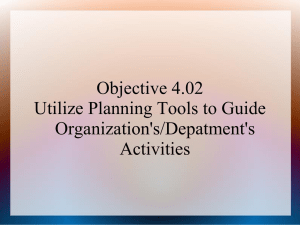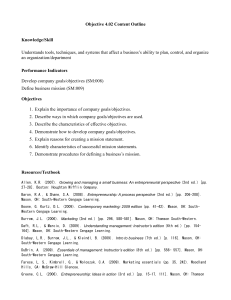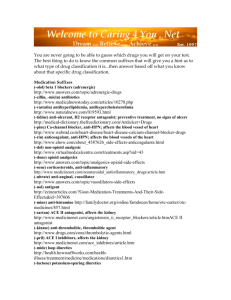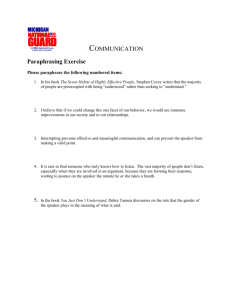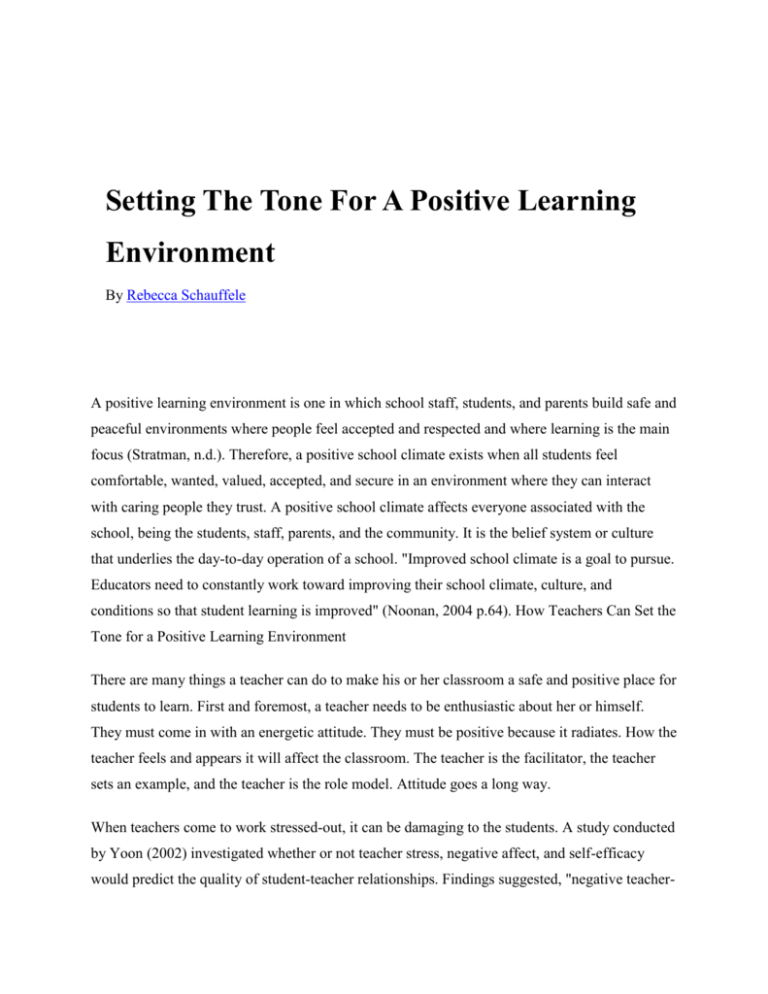
Setting The Tone For A Positive Learning
Environment
By Rebecca Schauffele
A positive learning environment is one in which school staff, students, and parents build safe and
peaceful environments where people feel accepted and respected and where learning is the main
focus (Stratman, n.d.). Therefore, a positive school climate exists when all students feel
comfortable, wanted, valued, accepted, and secure in an environment where they can interact
with caring people they trust. A positive school climate affects everyone associated with the
school, being the students, staff, parents, and the community. It is the belief system or culture
that underlies the day-to-day operation of a school. "Improved school climate is a goal to pursue.
Educators need to constantly work toward improving their school climate, culture, and
conditions so that student learning is improved" (Noonan, 2004 p.64). How Teachers Can Set the
Tone for a Positive Learning Environment
There are many things a teacher can do to make his or her classroom a safe and positive place for
students to learn. First and foremost, a teacher needs to be enthusiastic about her or himself.
They must come in with an energetic attitude. They must be positive because it radiates. How the
teacher feels and appears it will affect the classroom. The teacher is the facilitator, the teacher
sets an example, and the teacher is the role model. Attitude goes a long way.
When teachers come to work stressed-out, it can be damaging to the students. A study conducted
by Yoon (2002) investigated whether or not teacher stress, negative affect, and self-efficacy
would predict the quality of student-teacher relationships. Findings suggested, "negative teacher-
student relationships were predicted by teacher stress. Significant correlations were found among
negative affect, teacher stress and negative relationships"(p.486).
The teacher should also share with the students the importance of an education and the
importance of being independent. So if they see a teacher enthused about learning and ideas are
shared, then the students will feel the same as well. Teachers can also help create a positive
environment by simply caring for the students and showing each of them that they are special.
Furthermore, they should be taught to respect and care for each other.
Teachers should regularly conduct research to stay up-to-date on the best practices and methods
to use in creating a positive learning environment. Freda Glatt, a retired teacher who firmly
believes in the benefits of a positive learning environment has shared some tips on creating a
positive learning environment through the Sandral Sensations website (2003):
Make sure each child knows that he is important to you as an individual. Give eye contact and a
pleasant greeting to every child each morning. Look and sound enthusiastic when a child makes
progress on a skill he is finding difficult. Anytime is a good time for a smile.
Teach students to help rather than to laugh. It takes a lot of bravery to participate when you are
unsure of yourself. Bring that to your class' attention by doing some role-playing. Ask how they
felt when their classmates laughed at them. Remind your pupils that everyone is human and
makes mistakes...but that it is okay and expected. You do not want them to fear being ridiculed if
they ask a question or answer incorrectly.
Take note of your students' strengths and let them help you throughout the year. Make a positive
statement before giving a correction. Your reaction when a child gets an answer wrong is also
important. "A positive statement, followed by a negative one, helps to soften the blow and you
remind students that you care" (Burnett, 1999, p.3).
George Stratman of the San Diego County Office of Education (n.d.) has created a useful list of
"10 Subtle Ways to Create a Positive Learning Environment", which can be a useful guide of
elementary school teachers:
1. Begin your week by "nesting." Students need time upon arrival to become familiar with and
comfortable in their new surroundings. Take time during your first class to discuss the week and
what they will be doing and to answer questions they may have.
2. Use the students' names. They will feel that you know them and care about them.
3. Catch them being good. Praise the group and individuals when they do well. (Be careful not to
over praise an individual. Telling the other students that they should behave "just like Suzy" can
be counterproductive--and not necessarily appreciated by Suzy.)
4. Dignify wrong answers. If a child gives a wrong answer, give him or her credit for trying, and
if possible, relate their answer to the subject matter. For example, if you are asking the students
for an example of a decomposer and a student answers "manzanita," you could respond by
saying, "the manzanita is a vital part of this ecosystem, so you're on the right track. However, I'm
looking for a living organism that would help break down the manzanita into soil after it dies."
5. Give students a second chance to answer correctly. You could follow-up on the situation
above by giving all the students an opportunity to share with their neighbors some examples of
decomposers. Once it is clear that everyone has an answer, tell the student (above) that you will
give him/her another opportunity and then, after you've taken an answer or two from other
students, call on that student again.
6. Don't "zap" students. If a student is misbehaving, try and redirect the behavior in subtle ways
such as moving closer to that individual, utilizing his or her name in a sentence during
instruction (such as "let's say we were walking on the trail and Johnny came across a deer
track..."), or a gentle hand on the shoulder. If you must address the child directly and
aggressively, pull him/her away from the group. If you overtly discipline a child in front of the
group, others may be afraid to participate for fear of the same treatment.
7. Phrase your questions in a manner that is non-threatening. It is better to ask, "who would like
to share with the group..." than to ask "who knows the answer to..." as the latter implies that if
you don't raise your hand, you don't know.
8. Allow for thinking time. After you ask a question or give instructions give the students time to
process. If you give instructions and ask for questions but do not provide wait time, children who
process slower than others may not understand and will feel lost once the activity starts. Students
who are not given adequate time to consider when answering a question will similarly feel left
out.
9. Don't repeat answers. When a student makes a comment, let his/her comment stand on its
own. If you repeat the answer, the students will be trained to listen only to the teacher and you
will steal some of the "thunder" away from the student. If you think the others did not hear, have
the student repeat the answer. (Note: this technique may not work when addressing 200 people,
but is very effective with a smaller group.)
10. Give the students choices. Make sure the choices you give are acceptable to you. For
instance, you can say "today we are going to climb 'Daredevil Hill,' would you like to do that
before or after lunch?" Giving some choice in activities, or at least the order, gives the students
some control and buy-in for their week.
How Parents Can Set the Tone for a Positive Learning Environment:
Parents can also play a part in creating a positive learning environment (Muijs, 2004). Teachers
should expect parents to work with their child and school personnel to support the learning of
their child and the learning environment of the school. The Canadian Education Act 1997)
asserts certain expectations for parents. These are to: "meet the basic needs of their child; ensure
their child attends school; encourage their child to complete assigned homework; attend to their
child's conduct while the child is at school and on the way to and from school; communicate
reasonably with school personnel." (Canadian Education Act, 1997, p.1).
Just as the teacher's attitude plays a role in establishing the positive environment, the parents'
attitudes also take effect (Ajzen, 1988, p.10). Parents can help by sending the child off to school
on a positive note. If a parent smiles as he or she wishes the child a nice day and says "I love
you", the child is already approaching the day with a positive outlook and will be more receptive
to learning (Ajzen, 1988, p.10).
In conclusion, with the support and dedication of the teachers, parents, and administration, any
learning environment can and should be transformed into a positive learning environment.
Clearly, everyone has a different role to play and a responsibility to fulfill in order to maintain
the positive environment. There are many benefits to maintaining a positive learning
environment. "Positive learning environments in schools will maximize the learning of every
student; Help children and youth become full participating citizens of society; Help to build a
sense of community; Lead to cost savings and economic benefits as prevention is less expensive
than incarceration" (Positive Learning Environments in Schools, 2005).
Reference
Ajzen, I. (1988). Attitudes, personality, & behavior. Chicago: The Dorsey Press.
Burnett, P. (1999). The impact of teachers' praise on students' self-talk and self-concepts. New
South Wales, Aus: Teaching and Teacher Education. Retrieved September 15, 2005, from ERIC
database.
Canadian Education Act.(1997) Retrieved Sep. 14, 2005, from
http://www.gnb.ca/acts/acts/e-01-12.htm.
DiGiulio, R. (2001). Educate, medicate, or litigate? what teachers, parents, and administrators
must do about student behavior.. California, US: Educational Management. Retrieved September
15, 2005, from ERIC database.
Doctor, S. (1997). Creating a positive school climate. Towards Inclusion: Tapping Hidden
Strengths, 3. Retrieved Sep 14, 2005, from
http://www.edu.gov.mb.ca/ks4/specedu/fas/pdf/3.pdf.
Glatt, F. J. (2003). Retrieved Sep. 14, 2005, from Reading is FUNdamental Web site:
http://www.sandralreading.com.
Johnson, C., Templeton, R., & Guofang, W. (2000). Pathways to peace: promoting non-violent
learning environments.. Chicago: Elementary and Early Childhood Education. Retrieved
September 16, 2005, from ERIC database.
Muijs, D., Harris A., Chapman C., and Stoll, L. (2004). Improving schools in socioeconomically
disadvantaged areas--a review of research evidence. School Effectiveness and School
Improvement, 15(2), 149-175.
Rebecca Schauffele: Teaching is my PASSION. I am fun-loving and really enjoy working with
kids. Through my work, I hope to make a difference in the lives of youth and inspire them to
dream big and work hard to reach their goals.
Article Source: http://EzineArticles.com/?expert=Rebecca_Schauffele
Search EzineArticles.com:
Google Search
EzineArticles.com EzineArticles.com pub-3754405753
ISO-8859-1
0000
1
pyZc_H88ghdJkB GALT:#008000;G
4551525989
ISO-8859-1
en
Ads by Google
Classroom Voting
Systems
Buy Student Response
Systems Online Reply,
1
Current Rating:
ResponseCard, and Software
www.audience-responserentals.com/
Close
Reduce Dyslexia
Meet brain needs for reading
Home Training - All Ages
MLA Style Citation:
Schauffele, Rebecca "Setting The Tone For A Positive Learning
www.listenez.com
Environment." Setting The Tone For A Positive Learning Environment.
A Waldorf Education
15 Aug. 2007 EzineArticles.com. 4 Oct. 2010
An Education for the 21st
<http://ezinearticles.com/?Setting-The-Tone-For-A-Positive-Learning--
Century Educating the Head,
Environment&id=689772>.
Hands and Heart
www.princetonwaldorf.org
APA Style Citation:
Schauffele, R. (2007, August 15). Setting The Tone For A Positive
Cinematography Course.
1-yr diploma after 10+2
/Graduation CRAFT film
Learning Environment. Retrieved October 4, 2010, from
http://ezinearticles.com/?Setting-The-Tone-For-A-Positive-Learning--
school-delhi.:Apply Now
www.log2craft.org
Parenting Skills
Skills to Improve Child
Behavior Parenting Skills
that Really Work!
Environment&id=689772
Chicago Style Citation:
Schauffele, Rebecca "Setting The Tone For A Positive Learning
Environment." Setting The Tone For A Positive Learning Environment
EzineArticles.com. http://ezinearticles.com/?Setting-The-Tone-For-A--
www.ldsparentcoach.org
Positive-Learning-Environment&id=689772
Shanghai Int'l School
From:
British Curriculum, IGCSE & To:
IB For expatriate children
Message:
aged 2-18
www.ycis-sh.com
Most Recent EzineArticles from the Reference-and-Education
Category:
Study Skills Tips - Improve Your Study Habits in Five Steps
Math Halloween Activity for the Classroom
Physical Therapy Job Performance
Physical Therapy Jobs of Rehab Staffing to Hospitalized
Patients
Physical Therapy Jobs a Basic Entry Into Medical Line
PT and Rehabilitation Jobs - Chores Vs Benefits
Facts You Should Know About Physical Therapy Jobs and
Rehab Staffing
2012 - Get Ready
The Stanes High School, Coimbatore - A Relic of the Raj
Why Have an Outdoor Classroom?
Creative Learning Courses To Open Up New Dimensions
How Jigsaw Puzzles Are Made
Halloween Classroom Activities
Scholarship Program for International Students
Outsourcing Is the New Plagiarism - What Teachers Need to
Know
More...
More Related EzineArticles:
10 Tips For Teaching Middle School Math
Tips for Teaching Sunday School
Never Teach Summer School - Make More Money Using Your
Teaching Skills to Do This
How to Effectively Teach Middle School Students
Distance Learning School - Now a Cheaper Option
Distance Learning Schools Offer Many Programs of Study
Things to Know Before Joining a Japanese Learning School
The Challenges of Raising and Teaching Middle School Age
Children - Part 2
Tips and Advice For Your First Year of Teaching Elementary
School
Teaching, Learning, and Bonding with Pre-Schoolers
More...
Most Viewed EzineArticles in the Reference-and-Education Category
(60 days)
1. Homecoming Mums History Q & A
2. Tips For Getting a Pharmacy Technician Certification
3. UPSC IAS Subject Combination Tips and IAS Study Material
4. UPSC IAS Pattern and IAS Toppers Guidance
5. Relevance of Gandhi Today - Essay
6. Fifty Fun Halloween Facts
7. Halloween Theme Ideas - 20 Fun Halloween Activities For
Your Students
8. Computer Engineering Job - 10 Things You Must Know
9. What Is An Abstract Noun? - 7 Activities That Focus On
Identifying Abstract Nouns
10. Brown Vs Board of Education
More...
Most Published EzineArticles in the Reference-and-Education Category
(60 days)
1. Tips For Getting a Pharmacy Technician Certification
2. All About Anderson Greenwood Valves
3. UPSC IAS Pattern and IAS Toppers Guidance
4. Laser Technology Used Effectively on Laser Marking Systems
5. Female Special Agents at the FBI
6. Back to School - Get-Organized Tips - Part 2 of 3
7. The Coating Inspector Course And The Facts You Should Know
8. Bee Supplies - Your Keys to Succeed in Beekeeping
9. CTEL Preparation Advice for CTEL Test Prep Burnout
10. Supersonic E-Learning
More...
This article has been viewed 11,194 time(s).
Article Submitted On: August 15, 2007
689772
Rebecca Schauff
Ads By Google Learning ADHD in School Child Care School School Teaching Jobs
Ads by Google
© 2010 EzineArticles.com - All Rights Reserved Worldwide.
http://ezinearticles.com/?Setting-The-Tone-For-A-Positive-Learning-Environment&id=689772

